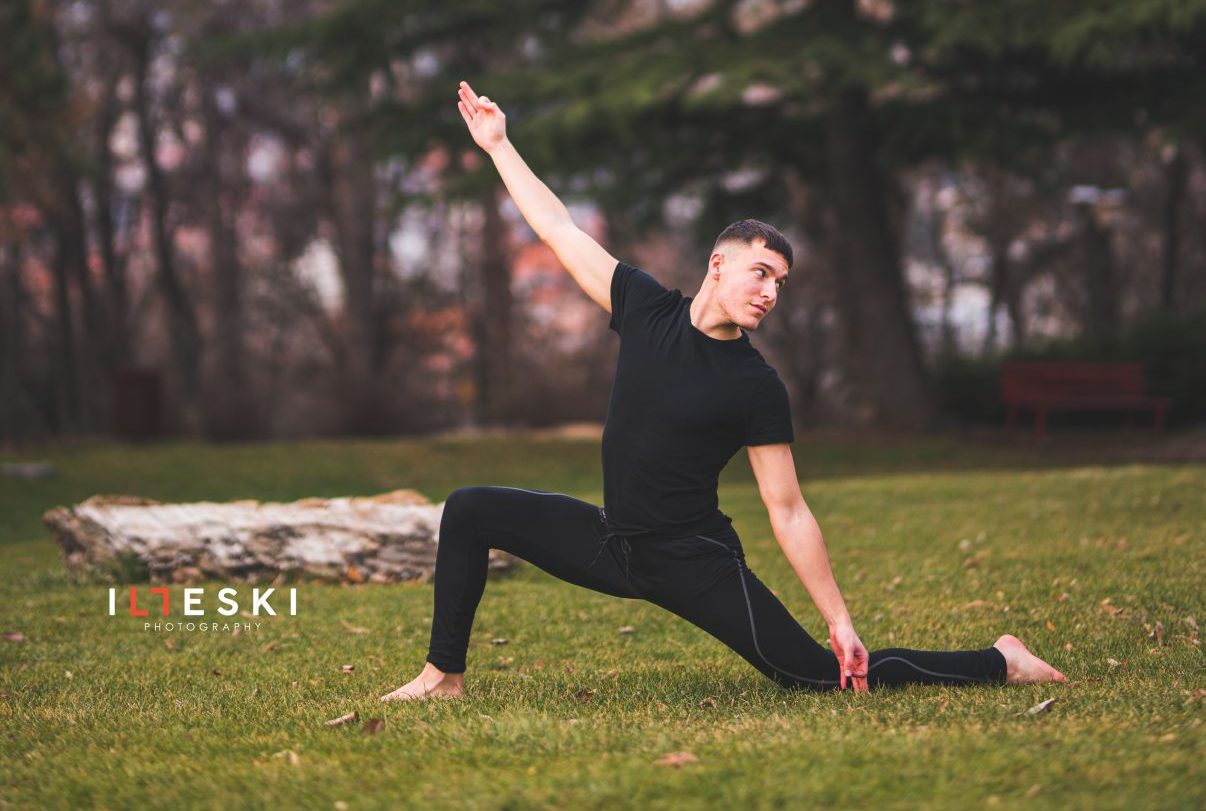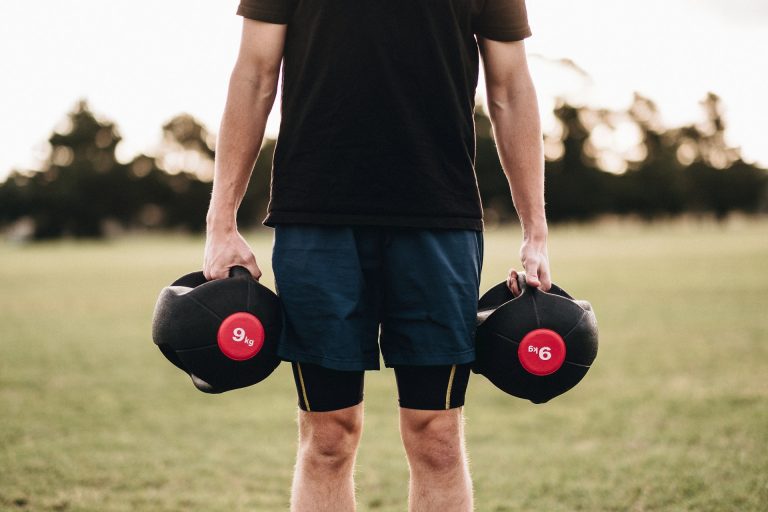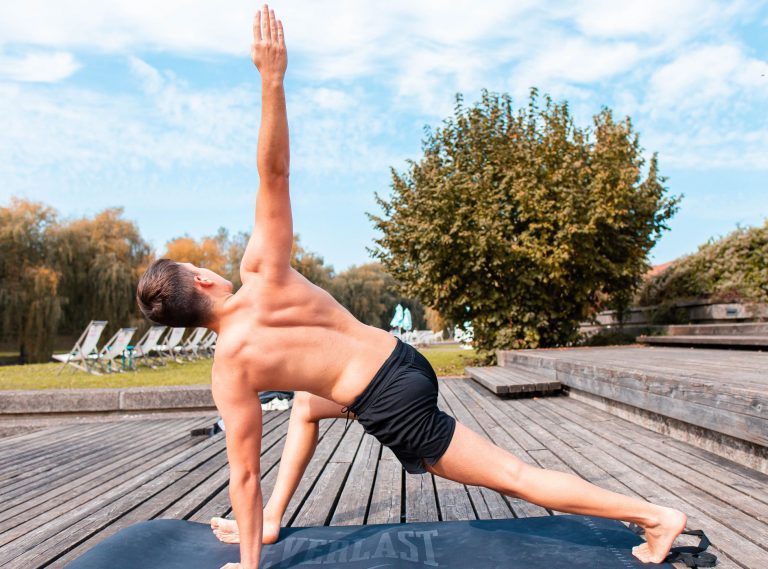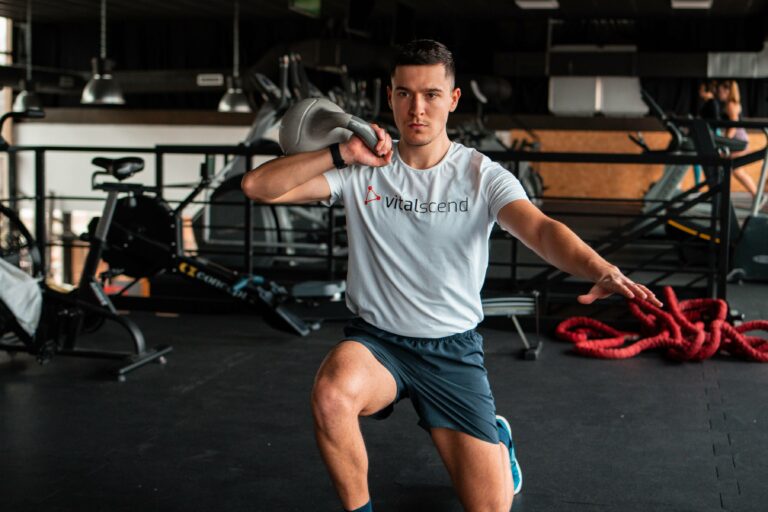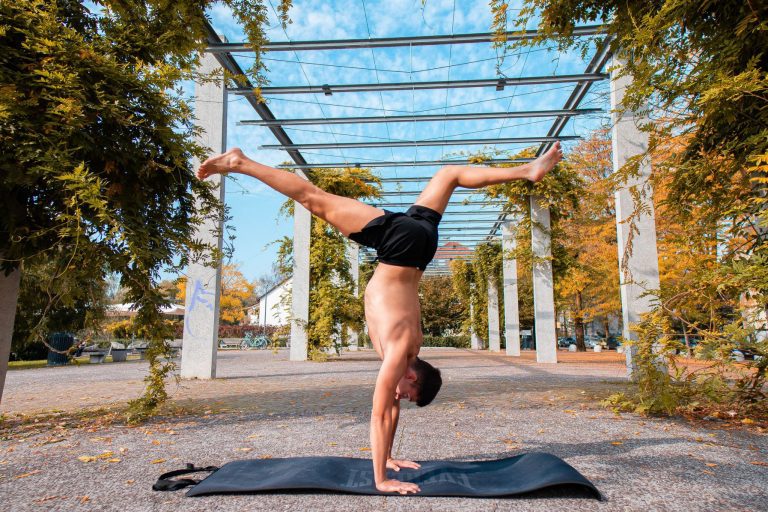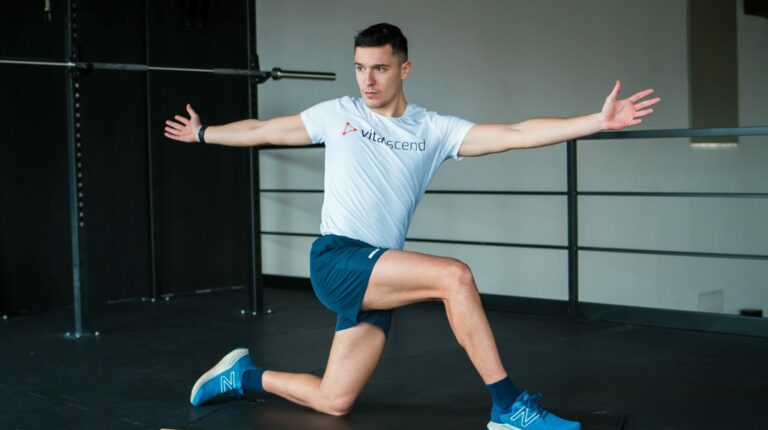Yoga Effects on Longevity, Vitality and Health Span
Yoga is one of the longest-known practices to man, for energizing the whole body. Reducing inflammation, and improving brain & cardiovascular health may be other factors that can lengthen our life.
This article discusses potential yoga benefits for overall health span and lifespan, as well as perceived vitality, energy, and vibrancy.
Through different methods and pathways, yoga or similar styles and elements such as yogic breathing as Pranajama or Ujjayi breath, Meditation, Chi gong, and so on, can positively influence our health and improve our well-being.
Aside from factors like cold exposure, sleep, activity, nutrition, and other bio-hacks, here we focus on yoga’s ability to improve our longevity, Enjoy it!
Vitality, Longevity & Health Span
You have probably heard these terms being used interchangeably, wondering what they actually mean.
Lifespan and Health Span are different. Lifespan refers to the age of living while health span refers to the quality of your health.
Now there are many different markers for health some of which are specific, some not so much. However, testing blood, and hormone levels and answering a questionnaire on activity, diet, smoking, etc. can give us a greater look. Also, anthropometric measurements and self-reported energy mean a lot.
Vitality
Vitality – it is alive energy, a life force that makes us move and regenerate or basically, be alive. Vitality is meant in a sense of well-being, health, and energy. It is associated with our strength and ability to exist or live, coming from the Latin word “vita” which means life. The cultivation of energy and its release is associated with vitality. The more one individual is positive, alive, fresh, vibrant, and energized, the more vital we say he/she is.
Longevity
Longevity is associated with the duration of one’s existence. Higher longevity means people basically live longer, and it is related to vitality and health span too. Longevity is used interchangeably with “anti-aging” which both refer to the same thing. Anti-aging has healthy aging and slowing down the aging process as its main goal, while longevity means living longer. Genetics, environmental factors, and diet play a major role in DNA repair, which are associated with longevity. There are some potential positive effects of yoga on the cardiovascular system, which might be related to its longevity-promoting effect.
Fun Fact
Centenarians are people alive over 100 years and the geographical places where they live are known as “The Blue Zones”. A couple of factors explaining their long life has to do with a healthy diet, sustainable activity, a supportive system, purpose, and good relationships.
Health Span
Healthspan is the quality of our health, all throughout our life. For example, a person living with pain, on medications, and lots of health problems has a lower health span than other people living with high energy, purpose, strong bodies, and optimal digestive, hormonal and immune system. Chronic diseases lower one’s health span since they are present most of the time, while acute conditions are just one happening.
Factors Influencing Longevity, Health Span, and Vitality
Even though this article is meant to make it clear how yoga helps all of these three, I would like to show a small biohacking section on how to improve longevity, healthspan, and vitality, after we burst into the information on specific yoga mechanisms of action.
Health markers are official measurements of one’s health that can be more generalized or specific. They are presenting certain aspects of the body whether it is weight, oxygen uptake, or hemoglobin levels. There are normal reference values in which our health is stable, out of these metrics we should probably consult with a doctor and see what we can change.
Health Markers
BMI, blood pressure, cholesterol profile, HDL & LDL ratio, triglyceride levels, VO2max, fasting insulin level, heart rate, body fat, IL-6 and C-reactive protein, other inflammatory factors, urine microalbumin levels, waist circumference, blood sugar and many more.
List of Factors
Here is a list of a few factors such as activity, diet, and sleep that can potentially improve our health.
- High-quality sleep, with the right sleep schedule and hygiene, along with relaxation in both physical and mental
- Wim Hof Method or Cold Exposure may help with boosting our immune system and reducing inflammation
- Water and Trance minerals can also reduce inflammation and support nerve transmission, strong bones, and regeneration
- Yoga & Meditation are one of the best ways to gain self-awareness and control over your body, mind, and spirit while connecting them. This can greatly reduce stress and improve physical health.
- A fiber-rich diet is meant to improve digestion, which besides improving nutrient absorption may improve mood, due to its connection called the gut-brain axis.
- Purpose and Vision can highly affect one’s health since most of the stress factors and bad mood are related to suffering which comes from enduring pain without meaning.
- Sauna and Massage can greatly reduce physiological risks and relax muscles, which allows the body to stop being hyperactive and get into the rest and digest state and regenerate.
- Plant rich diet is known to improve many markers of health, especially those related to weight maintenance and blood profiles.
- Herbs, Superfoods, and Nootropics can assist your great work and reduce the physiological stress you endure, whether physical or mental, a bunch of antioxidants and bioactive compounds can help you adapt.
- Intermittent Fasting is one of the great ways to reduce inflammation, reduce excessive insulin spikes, lose weight and boost sexual hormones.
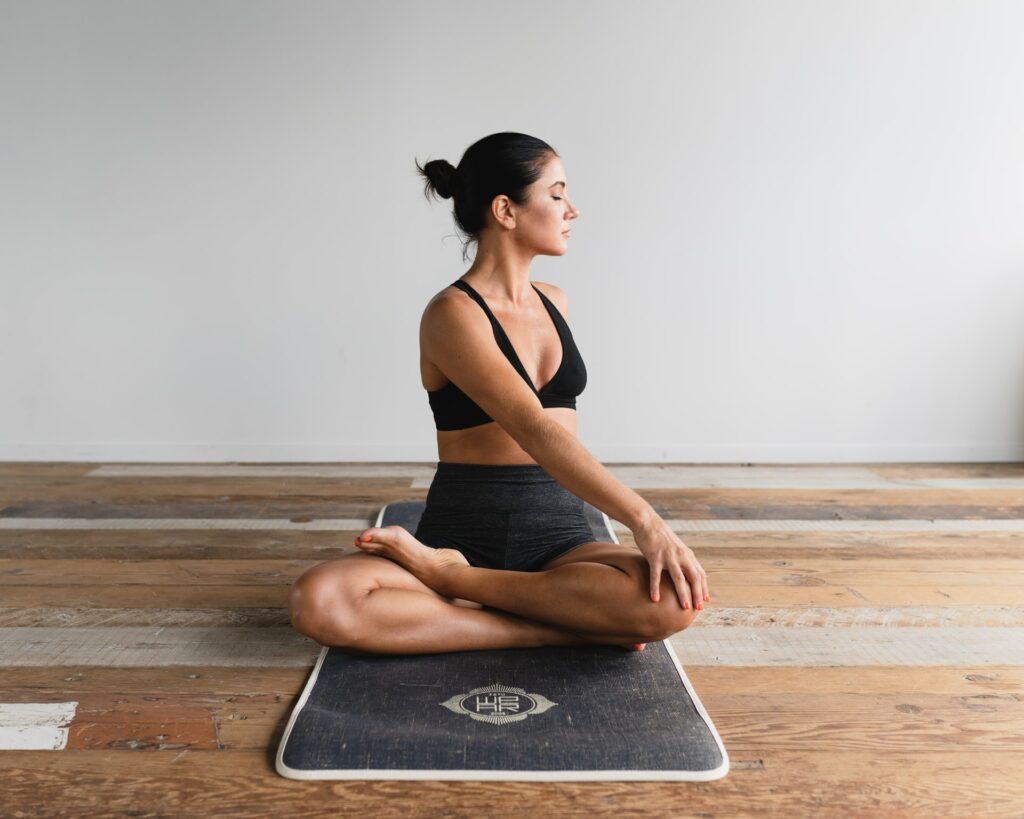
Mechanisms & Markers of Longevity
In order to understand how yoga or meditation may improve our health and make us live longer, we first need to recognize, define and understand some basic principles of aging. This brief section will give an overview of those pathways involved in aging, and will likely make the yoga studies more clear.
Telomeres
Autophagy
Inflammation
DNA Repair
Detoxification
Telomere dynamics is associated to one’s longevity. In fact, telomeres are the caps and the end of linear chromosomes that shorten as we age. We have chronological and biological age, biological can be measured with telomere length, thus greater length means longer life expectancy.
Autophagy is a way of regeneration and extraction of dead cells. For cellular homeostasis, autophagy is crucial. Those with increased autophagy are expected to live longer and healthier. One of the best ways to detox and promote autophagy is fasting since fasting lowers insulin and raises glucagon levels. Autophagy can induce many important anti-inflammatories and neuroendocrine homeostasis-related activities.
Inflammation plays a crucial role in longevity. It may be even more important than telomere length. Inflammation is a major cause of many diseases, especially chronic illnesses which reduce life and health span. Any exercise will cause inflammation, but it will also stimulate your body to fight back, which is great. Drinking more water, eating clean and cold exposure can significantly reduce inflammation.
DNA repair includes different processes in which a cell identifies and repairs the damage to the DNA molecule that encodes its genome. Base excision, nucleotide excision, and mismatch repair are the main mechanisms. The goal is to extend lifespan by promoting genomic stability.
Detoxification is a way of removing toxins from your body, which can be detrimental and poisonous to the living organism. Whether through fasting, eating plant-based or non-processed foods, or doing a juice cleanse, detox can help reduce toxins and inflammation which may improve many markers related to longevity and health.
Potential Effects of Yoga on Longevity, Vitality, and Health Span
There are a couple of evidence-based benefits that yoga can promote in the human body. Some of these are not metric-specific, but rather self-reported. However, there are numerous secondary effects of yoga that are known to improve overall vitality, well-being, and perceived energy, so here is a list of the main ones:
- Improved Quality of life
- Better Function and Mental Health, longer Meditative Experience
- Yogic Breathing can Reduce Stress by Activating Parasympathetic System
- Improved Perception of Physical and Mental Energy
- Increased Self-Reported Enthusiasm, Positive Mood and Energy
- Reduction of Anxiety, Depression, and Irritability
- Effect on Telomerase Dynamics & DNA Repair
- Potential Detoxification, Improved Blood Flow
- Reduces Oxidative Stress, Improved Oxygenation
- Anti-inflammatory Properties
- Improved Self-Awareness
- Improved Neuroplasticity, Increased BDNF
- Positive effects on Well-Being and Longevity
- Promotes Alertness through Synchronizing Brain Waves
- Promotes Relaxation through Increased Secretion of GABA
- May Help with Blood Sugar Regulation & Weight Maintenance
- May Help with Cardiovascular Health, Hypertension, or Blood Pressure
As we’ve seen, yoga as a form of body-mind-spirit integration practice, along with its breathing techniques can affect secondary factors that may improve lifespan and health span. It all depends on the type, duration, and frequency of yoga, but in the majority of the trials, yoga has positive effects on mood, sleep, relaxation, regeneration, and energy and may prevent chronic diseases.
All these factors, such as brain plasticity, reduced inflammation, and hormone balance which may seem unimportant, are related to longevity. Improving these secondary factors may significantly affect longevity and vitality.
Yoga on Longevity, Vitality, and Well-Being
When it comes to longevity and vitality, yoga can have a significant effect on humans. Long-term yoga practitioners in Australia were assessed for quality of life with a Meditation Lifestyle survey and questionnaire. It turns out that they enjoy better functional and mental health and meditative experience. (1)
Yogic breathing and meditation can reduce stress by activating the parasympathetic nervous system and reducing stress hormones, while improved self-awareness can make us more resilient to psychological stress.
Breathing and movement can significantly improve our blood and energy flow, which is linked to a higher quality of life, longevity, and resilience. By affecting our emotional state through breathing, yoga can positively affect our mood and mental health. Yoga and other energy work can also improve our neuroplasticity, which is the brain’s ability to adapt.
Ujjayi breath, also a famous yogic style of breathing may potentially increase GABA production, protect our brain, and synchronize brain waves. (2)
Another study showed that pranayama breathing and yoga asanas improved the perception of mental and physical energy, enthusiasm, and mental alertness in 71 volunteers. It turns out that a simple 30-minute yoga can potentially affect our vitality and energy perception positively. (3)
Another study in experienced female yoga practitioners showed that yoga positively affects psychological well-being and it has a dose-response effect. Reduction of anxiety, depression, and irritability was present. (4)
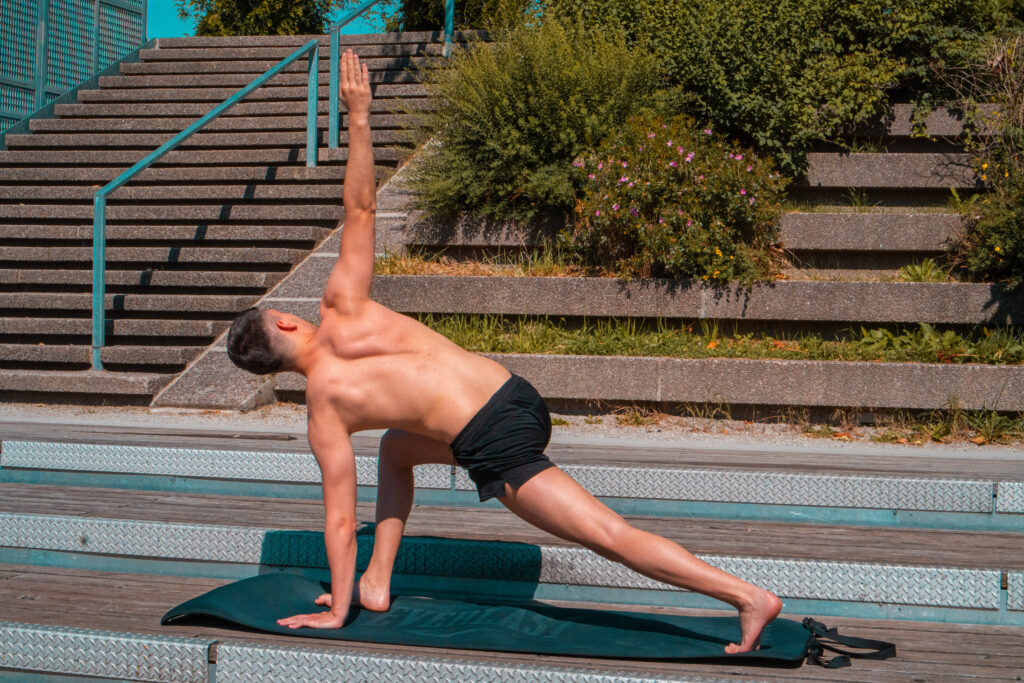
Yoga on Cellular Aging & Telomere length
Genetics and environmental factors play a major role in aging, and two very important processes are cellular aging and telomere dynamics. In fact, the faster telomeres shorten, it is believed that we will live shorter lives. Cellular aging refers to the limit of cell division. After many years, cells lose their dividing and regeneration potential, as we get old and suffer from diseases. Can yoga or meditation help in these aspects and slow down aging and increase lifespan? Let’s find out.
Telomere shortening is associated with aging and many diseases. Also oxidative stress and inflammation influence the rate of aging. (5) In theory, from a physiological perspective, reducing toxins, oxidative stress, and inflammation can help with aging, and yoga can do all three. (6)
Extra Research: Yoga on Telomeres and Longevity
- Meditation and yoga performed well in terms of cellular aging in healthy participants, who indulged in yoga & meditation lifestyle intervention. After 12 weeks the results were stunning. Yoga and Meditation helped in cardinal and cellular aging biomarkers improvement, cortisol and IL-6 were lowered while telomerase activity, B-endorphins, sirtuin-I, and BDNF were increased. This shows yoga’s potential to affect aging and improve health and well-being. (7)
- As shown in the previous section, telomeres can give us a look into our aging, mitotic cell, and organismal longevity. Psychological stress affects aging and immunity, and both meditation and yoga have been found to improve stress markers. Some of the underlying reasons are improved thought awareness, reduced stress arousal, and hormone balance. Meditation has also been found to improve endocrine balance and boost mood, raise DHEA and lower cortisol, plus decreases oxidative stress. (8)
- Another review shows yoga’s potential to increase longevity due to its effects on oxidative stress, DNA damage and cellular aging. Meditation can help by reducing stress levels & inflammation and Pranayama of breath-work increases oxygen flow. Overall, we can see that yoga positively affects telomere dynamics, even if it’s not possible to specifically detect telomerase activity in yoga trials in normal cells. (9)
Yoga on Stress and Inflammation
Since stress is related to inflammation and DNA damage, reducing or limiting it can significantly improve our health.
Yoga is known to reduce stress, along with meditation. One of the mechanisms is through reduction of cortisol and adrenaline stress hormones. Aside from this yoga as a form of exercise can improve blood flow and detox our bodies with it. Bringing fresh oxygen to our cells is crucial, as well as improved circulation.
In this study, 50 women tried yoga practice – a restorative Hatha session, and markers of stress and inflammation were measured. 25 were novices, and 25 were experts. It turns out that experts had lower IL-6 levels, which increases CRP levels, both of which show inflammation. (10) This is why yoga is known to improve stress resilience and the major changes that come with it.
Other factors for inflammation are TNF-a or tumor necrotic factor alpha and IL-6 Interleukin 6, as we mentioned before. Yoga practitioners were found to have lower concentration in both, plus it reduces the extent of increase of both. (11)
The 3-month Yoga retreat was tested for its effect on mind-body health and many other factors of well-being. Many inflammatory factors were increased, but due to the fact that yoga is a kind of exercise, which will stimulate inflammation against which our bodies will fight. BDNF levels were increased, which is great for brain health. (12)
A systematic review on yoga and chronic diseases found that yoga can be great for many aspects on human health, including weight maintenance, blood pressure, cholesterol, and glucose levels which can progressively cause bigger problems such as cardiovascular diseases, diabetes, and hypertension. (13)
Research Limitations
*Studies have some limitations, important to evaluate the validity of their results. Here’s a highlight of some and NOT ALL studies (and limitations), shown in this article, for context.
- Subjective values of sub-scales using questionnaire results.
- In need of complex, large-scale, and well-designed future studies.
- The study which includes only women as the sample is insufficient for claims on males.
- In need of more randomized controlled trials for specific populations.
- Unclear internal factors *gender may affect cytokines levels.
- Studies with small to moderate sample sizes, are hard to generalize.
- Focus on one geographical location limits generalization.
Conclusion
Yoga and Meditation have the potential to improve health and well-being and increase longevity. Living longer and healthier is possible through hormone balancing, stress resilience, neuroplasticity, energy, and improved blood flow. Some of the important factors associated with longevity are telomere lengths & dynamics, oxidative stress, and DNA repair. Yoga is known to influence secondary or primary factors that may improve overall vitality and longevity.

